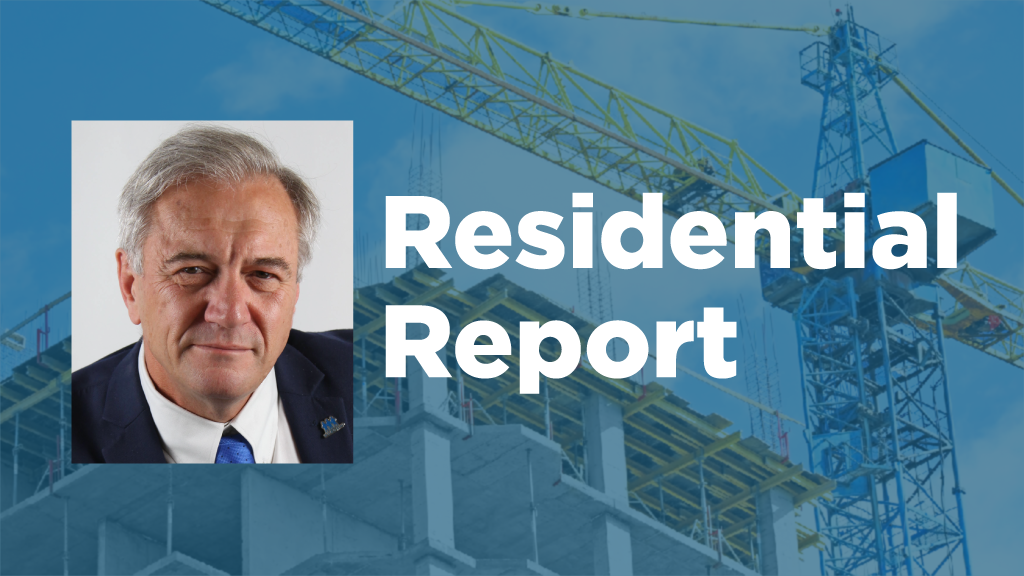Welcome to the Residential Report, a monthly column featuring news and insights into the residential construction sector.
Humans have limited attention spans.
In fact, the goldfish — yes, those tiny freshwater cyprinids — are more attentive than we are.
According to recent studies, the average human has an attention span of just 8.25 seconds, 4.25 seconds less than in 2000.
Perhaps that explains why there are so many misconceptions about the recently passed More Homes Built Faster Act and how it affects development charges (DCs) imposed on residential construction.
In the age of the Internet and cellphones, where people get their information in quick media hits and sound bites, it seems many are under the inherently false impression that builders of market-built housing are reaping huge rewards. To be perfectly clear, they are not. Period.
This is a false assumption. The legislation reduces or freezes DCs on certain types of housing, namely affordable and non-profit. Private developers of market-built housing are not affected by the changes.
In other words, they are not getting a break. I hope that is now clear.
The media has accurately reported the changes affect only affordable and non-profit housing. However, it seems some have mistakenly taken that to mean the new rules will affect market-built housing as well.
In fact, those who build market-built housing are still facing whopping DC increases in some regions. Toronto, for example, is hiking rates 46 per cent over two years.
It’s not the developers that pay for these increases, mind you. The developers collect the fees and then pay the municipalities. So, in the end, it is the new home buyers — those who are least likely able to afford it — footing the bill.
Rates in Toronto, in particular, have risen dramatically over the years. DCs for single and semi-detached houses was $12,366 in 2009 but will rise to $137,040 as of May 1, 2024, which is a huge 1,008-per-cent increase.
There are also myriad of other municipal fees to pay on new housing, such as parkland and community benefits charges that also keep increasing.
All these fees substantially increase the cost of buying a new home.
A number of ill-informed politicians and others have been pushing the narrative that developers are pocketing bags of money as a result of the changes affecting DCs. Again, this is blatantly false. It is irresponsible to push this line of thinking and I am not entirely sure why somebody would do that.
As I mentioned, developers collect the fees to pay municipalities. They don’t benefit in any way, shape or form from higher fees. In fact, they are a deterrent as they substantially increase the price of housing.
It was reported recently that municipalities in Ontario have more than $6 billion in DCs and other fees in reserve.
They earned $1.02 million in investment income and interest earnings from reserve fund surpluses in 2020 alone.
Toronto has $2.26 billion in DC reserves and Ottawa has $724 million. If they spend at the current average rate of $131 million per year, that would equal 5.52 years of DC reserves spending that is available.
How can municipalities increase fees when they haven’t even spent the fees they have already collected?
DCs are collected to pay for the future cost of infrastructure related to new development. Considering the fact substantial reserves have been built up, it is unfair to impose additional hefty hikes on the industry.
Developers fully recognize they must pay their fair share of costs for new development.
However, it should not be on the shoulders of the residential development industry alone to pay for the cost of public infrastructure like sewer lines and watermains.
The cost must be shared by the broader tax base, as it is not just new homeowners who benefit — the entire community benefits.
It is my opinion that the federal government must also play a bigger role here. Stable and sustainable federal infrastructure investment must be provided to municipalities to fund infrastructure like roads, bridges and sewers and watermains. The federal government collects substantial tax revenue from municipalities, as well as the HST from new housing, but little is returned.
That must change.
Richard Lyall is president of the Residential Construction Council of Ontario. He has represented the building industry in Ontario since 1991. Contact him at media@rescon.com.











More of this info needs to get into mainstream media and to the public.
These fees need to be exposed and made as public as possible.